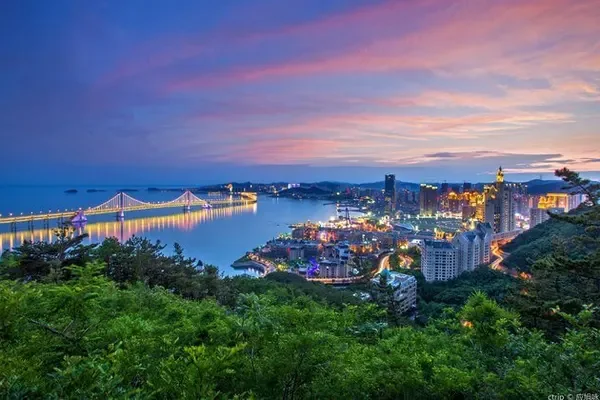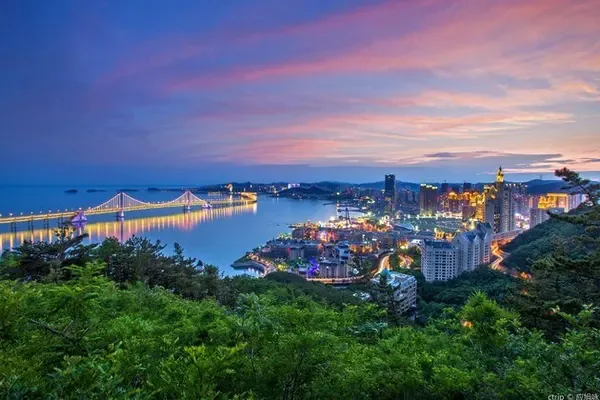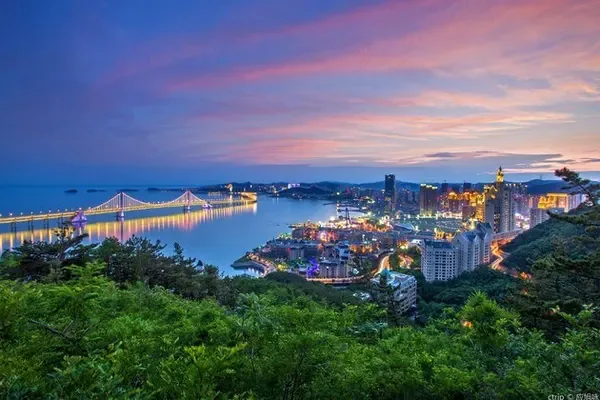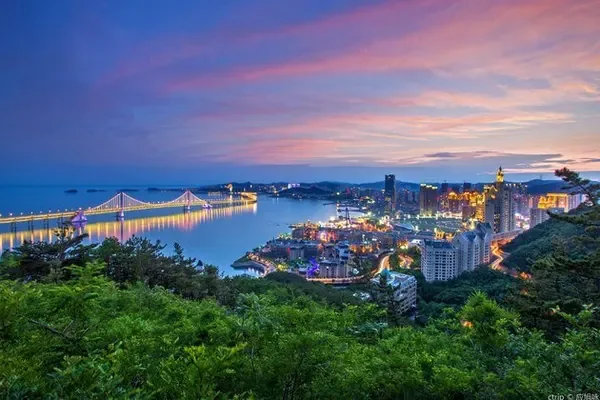Wuzhong is located in the central part of Ningxia Hui Autonomous Region. It is a city with profound historical accumulation and a long history of culture. It is known as "the south of the Yangtze River" and has rich and unique tourism resources. Next, I would like to recommend a must-see scenic spot in Wuzhong tourism, that is Qingtongxia Yellow River Grand Canyon Tourist Area.
Introduction to scenic area

Qingtongxia Yellow River Grand Canyon Tourist Area is located in Qingtongxia Town, Qingtongxia City, Wuzhong City, Ningxia, with a total area of 126 square kilometers. It has the reputation of "the first canyon in the middle and upper reaches" and "Yellow River Landscape Gallery". The scenic spot is rich in natural and human resources, and it is a representative scenic spot for promoting the Yellow River culture.

Ningxia Water Conservancy Expo has a total construction area of 4,086 square meters and an exhibition area of 2,850 square meters. It consists of six parts, 23 units, including Preface Hall, Qianqiu Liuyun, Shengshi Weiye, Water Conservancy Future, Water Conservancy Culture, and Water Conservancy Figures. It has 537 exhibits. Chen cultural relics comprehensively display the development history of Ningxia's irrigation from the Yellow River for more than two thousand years. Since the Qin and Han Dynasties, the Qingtongxia canal system has been criss-crossed. The first of the nine main canals, including Qinqu, Hanqu, and Tanglai Canal, has gathered in Qingtongxia. The total length of the main canals exceeds 1,200 kilometers, nourishing the land of Ningxia. In 2017, Ningxia's Yellow River Diversion Irrigation Project was rated as "World Irrigation Engineering Heritage", achieving a zero breakthrough in Ningxia's "World Heritage".

Qingtongxia Barrage Dam is a comprehensive water conservancy project that focuses on irrigation and power generation, taking into account multiple benefits such as flood control and snow prevention. It is the first and only riverbed pier-type hydropower station in my country. The construction of the dam started on August 26, 1958. In 1967, the first unit generated electricity, with a total length of 693.75 meters and a maximum dam height of 42.7 meters. The first power station and other components. The total installed capacity of the power station is 302,000 kilowatts, with an average annual power generation of 1.35 billion kwh. The completion of this project has ended the history of water diversion without dams in Ningxia for more than two thousand years, which has very important historical significance.

The 108 Pagodas were built in the Western Xia Dynasty and are the largest group of ancient pagodas in China. The 108 ancient pagodas are arranged from top to bottom according to the mountain situation, and the overall building is arranged in 12 rows in odd numbers, in the shape of an isosceles triangle. The tower group has been repaired several times in the Yuan, Ming and Qing Dynasties, and its overall layout and basic shape still retain the construction style of the Xixia Dynasty when it was first built. The cultural relics unearthed in the pagoda, such as brick Buddha statues, Xixia silk paintings, clay pagoda molds, painted clay statues, and remnants of Xixia scriptures, are of great value to the study of Xixia history and culture, water conservancy irrigation, etc. In 1988, it was announced by the State Council as the third batch of national key cultural relics protection units.

Dayu Cultural Park has a total construction area of 13,190 square meters. The overall architectural style imitates the architecture of the Han Dynasty. On the axis of the park, there are piers, squares, archways, bell towers, drum towers, Ming halls, and main halls. There are Hetu Luoshu and Jiuzhou Gardens on both sides. , Dayu statue and so on. The main hall is divided into upper and lower floors, and the exhibition space is divided into "one temple, two halls, three halls, and one corridor", that is, the Yuwang Temple in the center, the Dayu Life Hall and the Dayu Spirit Hall on the first floor, and the Dayu Water Control Hall on the second floor. The Hall of Dayu Mythology, the Hall of Dayu's Achievements and the Corridor of Dayu Culture show the great achievements of Dayu through murals, statues, calligraphy and other methods.

Qingtongxia Yellow River Grand Canyon is the last canyon in the upper reaches of the Yellow River. It is formed by the remaining veins of Helan Mountain and Niushou Mountain. It is 10 kilometers long and 50-100 meters wide. The cliffs on both sides are more than 30 meters high. The twists and turns of the Yellow River Grand Canyon are fast-flowing and majestic. The mountains on both sides of the gorge stand facing each other, and there are many wonders. There are many natural landscapes such as Qinwang Ancient Ferry, Guanyin Terrace, Tianshu Pavilion, Sleeping Buddha Mountain, Qingtongxia Stone Carvings, etc., showing the grandeur, strangeness, danger, steepness and seclusion of the canyon, which makes people linger and forget to return.


The most popular experience items in the scenic area are boat rides and sheepskin raft rides. The canyons on both sides are steep and the scenery is beautiful, allowing tourists to feel the grandeur of the Yellow River mother surrounded by mountains and water, and experience the unique charm of the Yellow River culture in the Northwest.
play line
There are two main lines in the scenic area:
◆ Route A [Exploring the Ancient Pagoda of Xixia]
Tour routes: Jiuqu Square, Ningxia Water Conservancy Expo Hall, Qingtongxia Water Conservancy Project, boat tour on the Yellow River, 108 Towers, return;
Tour duration: 2 hours
◆ Route B [Boat Tour in Ten Mile Long Gorge]
Sightseeing route: including all the scenic spots above Line A, boat trip to Shili Changxia, Dayu Cultural Park, and return;
Tour duration: 3 hours
Tour Tips
1. It is recommended to drive to the scenic spot by yourself, because the only buses that can go to the scenic spot are Xiaoba No. 5 bus and Wuzhong City No. 29 bus. It is also difficult to take a taxi near the scenic spot. It is the most convenient to drive by yourself.
2. During the epidemic prevention and control period, the scenic spot implements a time-sharing reservation system, and the ticket sales stop at 16:30 every day. Everyone must arrange the time according to the route to avoid the embarrassing scene of arriving at the scenic spot for thousands of miles and missing the ticketing time. oh~
3. During the epidemic prevention and control period, the exhibition halls in the scenic area are not open, such as the Water Conservancy Expo Hall, the Tallinn Expo Hall in Tower 108, and the main hall of Dayu Cultural Park. If you are a special trip to visit the exhibition hall, you can come back after the epidemic. ~
4. Remember to wear a pair of comfortable shoes, because there are many places to walk in the scenic area, and there are many steps, so don’t make your feet uncomfortable~
5. You can prepare drinks, bread, fruit and other food in advance, because there are no restaurants in the scenic area, and the shops in the scenic area sell a limited variety of things. The food you bring can meet your needs. After the tour is over, go to other places to eat .
6. If there are disabled or elderly tourists in the group, remember to ask the staff for a green pass after buying the ticket (package ticket), so that you can drive directly to the pier to take the boat, which will be more convenient .
7. There are relatively large cruise ships and speedboats in the scenic area. The cost is the same. Generally, the staff randomly arranges tourists to ride. If there are special circumstances or you want to take a designated ship type, you can talk to the staff Ask for a coordinated solution.



